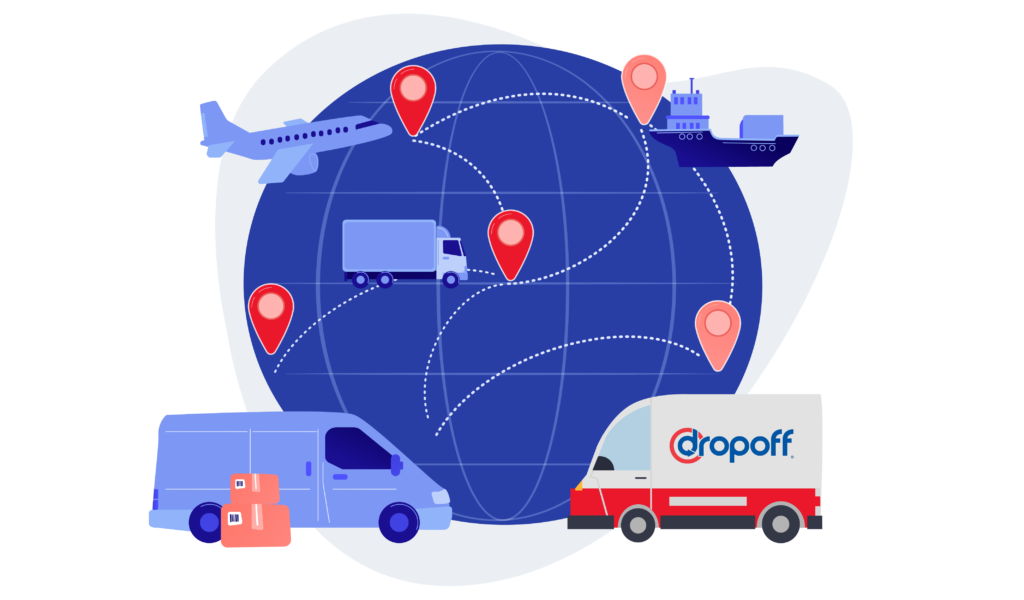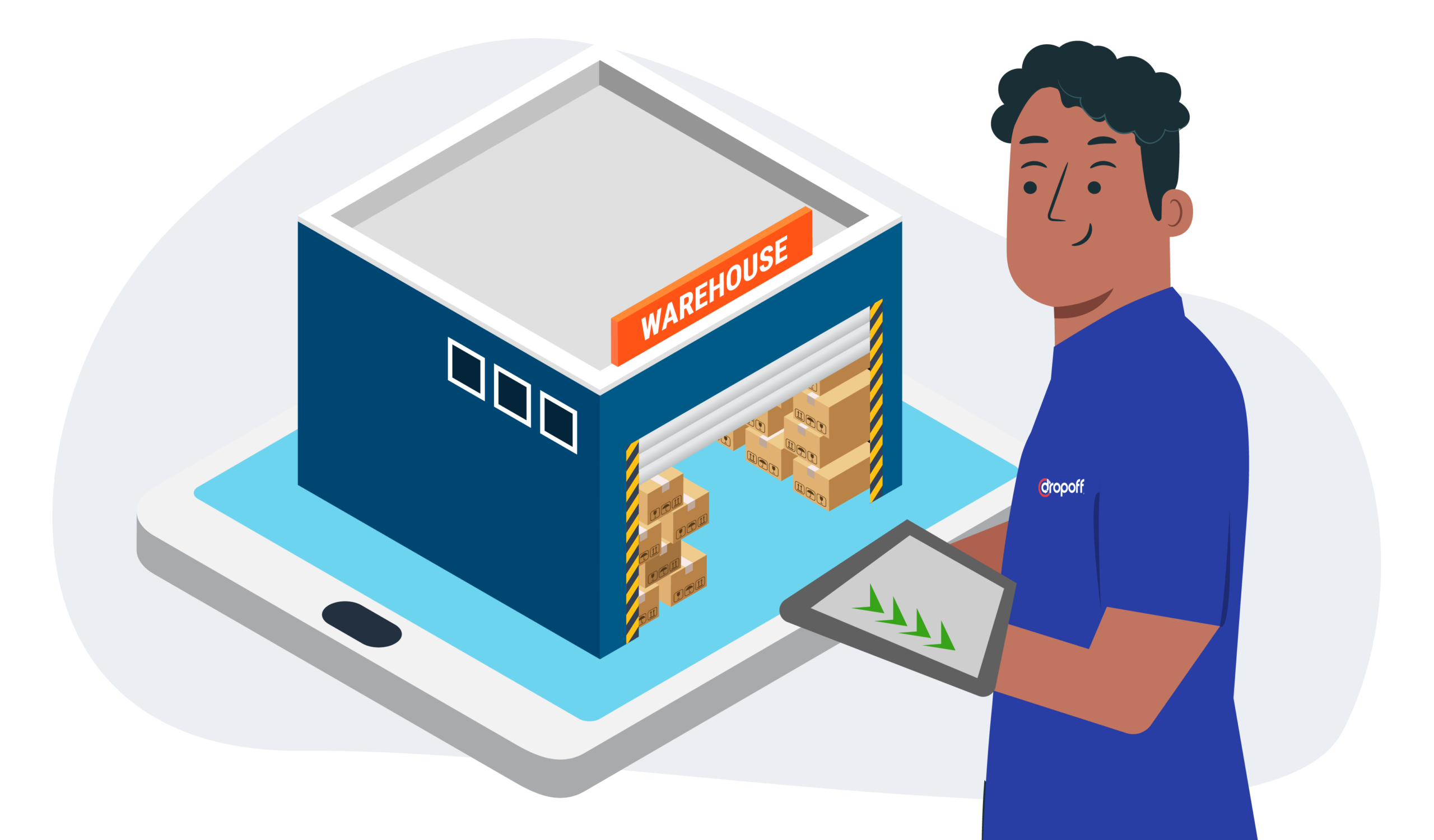6 Tips on How to Deal with Shipping Rate Increases in 2023

As the demand for delivery continues to rise, business owners look for ways to handle shipping rate increases.
This blog post will discuss tips on dealing with shipping rate increases in 2023. By following these tips, you will keep your shipping costs under control and maintain healthy profits for your business.
Shipping Rates Continued to Rise in 2022
2022 was an expensive year for shippers who weren’t prepared for higher annual rate increases. This year, a 5.9% general rate hike was common across U.S. carriers, higher than the 4.9% increase many applied in 2021.

1. USPS Shipping Rate Increase 2022
The USPS filed a notice with the Postal Regulatory Commission regarding a temporary price adjustment for essential package products during the 2022 peak holiday season.
The planned rates would affect commercial and retail domestic competitive parcels, including Priority Mail Express (PME), Priority Mail (PM), First-Class Package Service (FCPS), Parcel Select, and USPS Retail Ground. International products would not be affected. The temporary rates went into effect on October 2 and will remain in place until January 22, 2023.
A brief outline of the USPS rate changes in 2022:
Domestic Shipping Rates (Commercial Base Pricing):
- Priority Mail Express rates increased by an average of 4.3%.
- Priority Mail rates increased by an average of 2.7%.
- First-Class Package Service rates increased by an average of 7.4%.
- Parcel Select Ground rates decreased by an average of 12.1%.
- Media Mail rates on average increased by an average of 12.1%.
International Shipping Rates (Commercial Base Pricing):
- Priority Mail Express International rates increased by an average of 3.2%.
- Priority Mail International rates increased by an average of 3.7%.
- First-Class Package International Service rates increased by an average of 4.2%.
A quick read: The Ultimate Guide to Logistics Optimization.
2. FedEx Shipping Rate Increase 2022
FedEx also responded to rising demands, higher labor rates, and spiking fuel costs by raising their rates.
Effective January 2022:
- FedEx Express, FedEx Ground, FedEx Ground® Economy, and FedEx Freight rates increased.
- New shipping surcharges and fees were applied to customers’ total shipping rates.
- There were updates to the Delivery Area Surcharge ZIP code lists for FedEx Express and FedEx Ground.
- FedEx Freight imposed a “No Shipment Tendered” surcharge for pickups where no shipment is given to the carrier.
- A Delivery and Returns Surcharge will be assessed on delivered or returned packages using FedEx Ground Economy services.
- The Additional Handling Surcharge and Oversize Charge rates for U.S. Express Package Services and U.S. Ground Services will be based on the shipment’s zone.
3. UPS Shipping Rate Increase 2022
Similarly, UPS adjusted its rates to help pay for improvements and expansions.
Effective January 2022:
- The Air Fuel Surcharge will be based on the National Average U.S. Gulf Coast Jet Fuel Price and adjusted weekly.
- The Ground Fuel Surcharge will be based on the National U.S. Average On-Highway Diesel Fuel Price and adjusted weekly.
- The list of Zip Codes to which Area Surcharges apply was updated.
Shipping Rate Increases in 2023: What to Expect

What shipping rate increases should you look out for in the coming year of 2023? Let’s discuss a few potential spikes below.
1. FedEx versus UPS
UPS and FedEx have been increasing their rates by 4.9% annually for nearly a decade, but they broke that trend for 2022 and announced a 5.9% increase. This increase shocked the industry, especially considering their customers’ struggles due to the pandemic and UPS’s already record-setting profits.

“The similarities of base price increases between the two aren’t a coincidence. If one of the carriers decided to implement lower rate hikes than its competitor, its network would be overwhelmed by a surge in demand that would hurt service levels. They will always be pretty similar, because right now, one of them can’t absorb significantly more customers than the other one can.”
Kevin Miller, Vice President of Data Insights at Sifted
2. DHL Express Follows Suit
Following behind, DHL Express announced price adjustments that will take effect on January 1, 2023. The average increase in Australia will be 7.9% compared to 2022.
“With the annual price adjustment, we are able to invest in our infrastructure and technology to ensure resilient, sustainable, and world-class customer solutions. It includes state-of-the-art aircraft and vehicles, expanding our hubs and gateways to meet increasing customer demand, and investing in green and more sustainable solutions, such as Sustainable Aviation Fuel and electric vehicles.”
Gary Edstein, CEO & Senior Vice President at DHL Express Australia
The Impact of GRI Announcements
What is surprising is that carriers are not using GRI announcements as a way to get customers. Instead of using it to attract new business, they use rate hikes to offset volume declines and ensure revenue growth goals are met.
Check out our guide on third-party and in-house fleet management!
4 Reasons Why Global Shipping Rates Will Continue to Rise

Let’s break down the four main reasons why shipping rates increase.
1. E-Commerce Keeps Growing
Lockdowns led to more online shopping, even among baby boomers. This change in spending habits made the demand for container space shoot through the roof. For instance, in December 2020, US-inbound cargo volumes were up 23% from the year before, leaving carriers struggling to keep up with the demand.
In addition, global shipping volume is predicted to reach 200 billion parcels by 2025. So it’s safe to say logistics professionals are trying to prepare for a future in which eCommerce is the norm.
2. Labor Shortages
Ports, warehouses, and manufacturing hubs are genuinely struggling to find workers.
The pandemic made people not want to return to the workforce, despite safety measures. With fewer staff, companies have to work at a lower capacity and raise prices.
3. Random Outbreaks and Closures
The current state of the shipping industry is a perfect example of how interconnected the global economy is. A delay in one part of the world will quickly lead to issues in other parts of the world.
In this case, the inconsistent access to key ports delays the delivery of goods, which impacts the manufacturing output. Think ripple effect!
In January 2021, a Los Angeles port saw 42 ships anchored offshore – yet every warehouse within 60 miles was already full. They had to wait until space was available without anywhere to transfer the cargo, and these delays came at a cost.
4. Shipping Container Shortages
Simply put, most empty containers were stuck in understaffed, congested, or locked-down ports.
Fewer containers are available for a return trip to Asia or Europe when fewer ships arrive at US ports. So then, what happens next? Massive pileups of goods in stateside warehouses and port terminals, causing delivery times to slow overall.
6 Tips on How to Deal with Shipping Rate Increases

“The best practice for working through general rate increases going into effect in January, know your costs. Analyze your shipping invoices in detail. Ensure a clear understanding of each line item on the invoice. What is the price now, and what is the price in January? Some surcharges will go up double digits, others smaller amounts. Then search for the final mile provider in your market.
Sometimes it’s more cost-efficient and higher levels of service to work with an alternative provider like Dropoff. Dropoff offers a customized final mile service with a superior recipient experience, all driven by our 24/7 customer service teams and industry-leading technology.”
Millie Tarallo, Chief Revenue Officer at Dropoff
Every business owner should know what to do when their carrier raises their rates. Here are six tips on how to approach shipping rate increases.
1. Change Inventory Location
Shipping costs are a real pain for eCommerce businesses, but there are a few ways to offset those costs. One way is to put products closer to most customers by distributing inventory to multiple warehouses or focusing marketing efforts on areas near existing warehouses.
Another option is a zone-skipping strategy, where packages are moved by bulk freight to a post office near their final destinations. It takes extra effort but should pay off in the long run.
2. Reduce Package Weight and Dimensions
Weight is a significant factor in determining shipping costs. The heavier the box, the more it will cost to ship.
For example, a box that weighs 10 pounds will cost 30 cents more to ship than usual during USPS’s 2022 Christmas rate hikes. However, if that same box weighs just one ounce more, the shipping cost will increase by 95 cents. So just a slight increase in weight will have a major impact on shipping costs.
Ways to reduce the weight of your package:
- Use corrugated packaging
- Use lightweight packing material
- Customize your shipping package
A few simple tweaks to your packaging process could save you a few ounces each shipment, leading to bigger gains in your profit margins over time.
Speaking of cheap shipping, here’s everything you need to know about economy shipping.
3. Find Cheaper Rates
It pays to do your homework if you want to save money on shipping. Always compare rates from different carriers; don’t be afraid to search for discounts. You may negotiate a better rate, especially if you’re a frequent shipper.
4. Use Flat-Rate Shipping
The size and price of shipping containers are constantly changing, which makes it challenging to keep up with the latest prices.
Examples of rate changes driven by package size in 2021:
- UPS increased rates by an average of 4.9%, with higher costs for oversized and heavy packages.
- USPS increased rates by 2% to 4.95%, depending on the item’s size.
- FedEx raised the amount it charges for shipping freight from $0.10 to $0.35
Today, online brands are turning to flat-rate shipping to lower shipping costs. With flat-rate shipping, the shipping cost is the same regardless of the weight or size of the item. This makes it much easier for customers to budget shipping costs, encouraging them to make larger purchases.
5. Stay Up-To-Date with Rate Changes
As a business owner, stay on top of pricing changes so they don’t cut into your bottom line. Shipping carriers review their annual pricing and adjust rates due to higher costs like labor and fuel. New prices become effective every January and even during the year. To stay ahead, sign up for carrier rate updates and check their websites regularly.
6. Offer Local Pickup and Delivery
A recent trend is people shopping through small, independently-owned businesses. According to Shopify’s customer trends data, almost a third of buyers say they’ve ordered something online and opted for local deliveries only since the pandemic started.
Local delivery lets customers buy your products online and have you deliver them to their homes. Customers can even pick up their online orders from your store.
Benefits of offering local delivery services:
- Connect with your local community
- Improve customer experience
- Increase sales
How Dropoff Can Help

We can perform the ultimate custom logistics solution this holiday season that meets your unique needs.
Logistics is a complex and time-consuming process. From managing inventory to coordinating shipments, there are many moving parts to keep track of. We offer a comprehensive suite of logistics services that helps you focus on other areas of your thriving business.
In addition, we have a team of experienced professionals who are available 24/7 to answer any questions you may have. So whether you’re looking for a one-time solution or a long-term partner, we’re here to help.
Talk with a Dropoff expert today and watch your logistics operation streamline itself.
FAQs on Shipping Rate Increases
The shipping process is complex and involves many costs that add up to a big number. Factors like labor, fuel surcharges, package weight, package dimensions, and destination all play a part in determining the final shipping rate.
Shipping rate is the amount you charge your customers for shipping on top of the cost of the products they order. Shipping rates are added to the customer’s order during checkout.
There is no clear answer whether or not shipping rates will go down in the future. The factors we mentioned before, such as the price of fuel, the strength of the global economy, and the level of competition among shipping companies, affect rates.
But one thing is sure: shipping companies always look for ways to reduce costs and improve efficiency.
Both FedEx and UPS provide time-sensitive deliveries at similar rates.
Here are a few ways to cut down on shipping costs:
– Change the inventory location
– Reduce package weight and dimensions
– Find cheaper carrier rates
– Use flat-rate shipping
– Stay up-to-date with rate changes
– Offer local pickup and delivery






